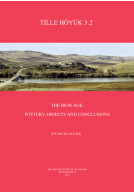Substantive Technologies at Çatalhöyük: Reports from the 2000-2008 Seasons (Hardback)
Çatalhöyük Research Project, Volume 9
Imprint: British Institute at Ankara
Series: British Institute at Ankara Monograph
Pages: 300
Illustrations: 250 illustrations and 50 tables
ISBN: 9781898249313
Published: 30th September 2013
Script Academic & Professional
Series: British Institute at Ankara Monograph
Pages: 300
Illustrations: 250 illustrations and 50 tables
ISBN: 9781898249313
Published: 30th September 2013
Script Academic & Professional
You'll be £19.95 closer to your next £10.00 credit when you purchase Substantive Technologies at Çatalhöyük: Reports from the 2000-2008 Seasons. What's this?
+£4.99 UK Delivery or free UK delivery if order is over £40
(click here for international delivery rates)
Need a currency converter? Check XE.com for live rates
(click here for international delivery rates)
Need a currency converter? Check XE.com for live rates
The Neolithic site of Çatalhöyük in Turkey has been world famous since the 1960s when excavations revealed the large size and dense occupation of the settlement, as well as the spectacular wall paintings and reliefs uncovered inside the houses. Since 1993 an international team of archaeologists, led by Ian Hodder, has been carrying out new excavations and research, in order to shed more light on the people who inhabited the site. The present volume reports on the results of excavations in 2000-2008 that have provided a wealth of new data on the ways in which humans became increasingly engaged in their material environment such that ‘things’ came to play an active force in their lives. A substantial and heavy involvement was with alluvial clays that surrounded the site. In the absence of large local stone, humans became increasingly involved in the extraction and manipulation of clay for a wide range of purposes – from bricks to ovens, pots and figurines. This heavy use of clays led to changes in the local environment that interacted with human activity, as indicated in the first section of the volume. In the second section, other examples of material technologies are considered all of which in various ways engage humans in specific dependencies and relationships. For example, large-scale studies of obsidian trade have drawn a complex picture of changing interactions between humans over time. The volume concludes with an integrated account of the uses of materials at Çatalhöyük based on the analysis of heavy residue samples from all contexts at the site.
Other titles in the series...
Other titles in British Institute at Ankara...





















